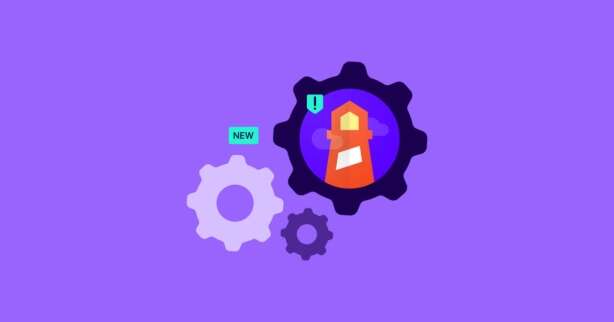Google recently released Lighthouse 10, the latest version of its open-source tool for analyzing and optimizing web pages.
There are several significant changes and improvements that web developers and site owners need to know about.
Read on.
The Deprecation of Time to Interactive (TTI)
One of the most significant changes in Lighthouse 10 is the removal of Time to Interactive (TTI).
The depreciation process started in Lighthouse 8, and Lighthouse 10 marks its conclusion.
TTI’s score weight, which was 10%, is now being transferred to Cumulative Layout Shift (CLS), increasing its overall performance score weight to 25%.
The reasoning behind Google’s decision was:
“TTI marks a point in time, but the way it’s defined makes it overly sensitive to outlier network requests and long tasks. Largest Contentful Paint (LCP) and Speed Index are usually better heuristics for a page’s contents feeling loaded than a count of active network requests. Total Blocking Time (TBT) meanwhile handles long tasks and main-thread availability more robustly, and while not a direct proxy, tends to correlate better with Core Web Vitals as measured in the field.”
Put simply:
There are better and more reliable metrics to measure the time it takes for a page to become fully interactive after a user arrives on it.
Also, Google once again shows that the future belongs to the field metrics.
What do these scoring changes mean to you?
The good news is that most site owners will see an improvement in their Lighthouse performance scores.
Out of the 13 million page loads analyzed in the most recent HTTP Archive run, around 90% of them are expected to experience an increase in their Lighthouse performance score. Approximately 50% of these pages will see a performance boost of over 5 points.
As it turns out, most sites score better for CLS than TTI.
In case you’re experiencing CLS issues and low scores, the following techniques could help:
- Add width and height attributes to images and videos
- Reserve space for ads, embeds, and iFrames
- Optimize font delivery
You can find more in-depth information and best practices in our CLS guide.
“Removing a high-variance metric like Time To Interactive will make Lighthouse 10 sharper in its results.”
—Georgi Petrov, CEO and co-founder of NitroPack
New Performance Audits
Lighthouse 10 introduced a brand new performance audit and an update to an existing one.
[NEW] Page prevented back/forward cache restoration
The back/forward cache (bfcache) is a highly effective tool for enhancing the performance of a web page for actual users. Unlike the standard browser cache, a page that is loaded from the bfcache can quickly restore the page layout and execution state, bypassing most of the page load activity.
This makes the page immediately accessible to users as they navigate back and forth through their browsing history.
The great thing about bfcache is that you don’t have to do anything to set it up. Browsers do it automatically.
However, in some cases, a page can prevent the browser from restoring a page from the bfcache. When that happens, Lighthouse’s newest audit will fail:
But the good news is that it will list the reasons for failure, so you will know exactly what to optimize.
[UPDATED] Allows users to paste into input fields
The previous Best Practices audit, “Allows users to paste into password fields,” has undergone an expansion to verify that pasting is feasible for all input fields except for read-only ones. For many websites, disabling the paste function creates a negative user experience and hinders necessary safety and accessibility workflows.
The new audit is now “Allows users to paste into input fields” (paste-preventing-inputs).
When Will The Changes Become Active?
Lighthouse 10 is available on the command line through npm and in Chrome Canary. It will also soon be available in PageSpeed Insights and Chrome stable in Chrome 112, currently scheduled for release on March 29, 2023.

